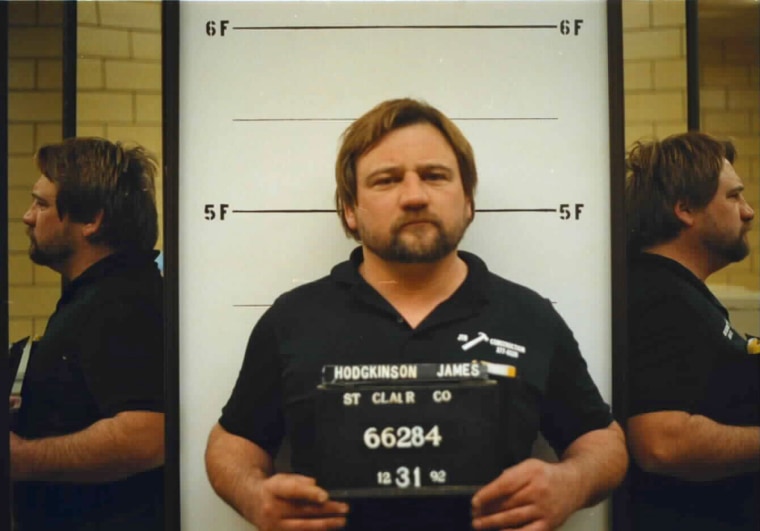Over a decade before James T. Hodgkinson shot a member of Congress and three others at an Alexandria, Virginia, baseball practice, he was charged with firing a weapon after hitting a 19-year-old man with a shotgun.
It was April 2006 in Belleville, Illinois, and Hodgkinson's temper had flared to frightening proportions after he had gone looking for his teenage foster daughter at her friend's house. The 19-year-old friend told police that Hodgkinson had forced his way into the house and began screaming at his daughter.
She locked herself in a room and hid next to a bed, but her foster dad forced open the door and began to beat her, pull hair out of her head, and try to pull her out of the room, according to the St. Clair County Sheriff's Department.
The report describes how the two teen girls ran out of the house and tried to escape in a car — but Hodgkinson pried open a car door and used a knife to slice the seat belt apart. He began choking his daughter as her friend tried to protect her, the report said. When the friend told Hodgkinson she was calling the police, he turned and punched her in the face before finally leaving the scene.
The incident resulted in six criminal charges against Hodgkinson: two counts of domestic battery, two counts of battery, aggravated discharge of a firearm, and criminal damage to a motor vehicle. Police took the teen foster daughter to the station until she could be picked up by her sister, and the state took custody away from the Hodgkinsons a couple of months later.
Related: James Hodgkinson 'Apparently Volunteered' for Bernie Sanders Campaign
Hodgkinson's charges were later dismissed, which meant there were no restrictions on him owning guns.
The domestic violence records of men who commit mass shootings often surface after they kill. An April study of mass shootings conducted by the anti-gun group Everytown for Gun Safety showed that 42 percent of mass shooting cases were predicated by at least one "red flag" incident — often domestic in nature, often taking the form of violence against women.
Before Jody Lee Hunt shot and killed four people including his ex-girlfriend in West Virginia in 2014, the ex-girlfriend had filed domestic violence charges one month earlier. Hunt had also served time previously for kidnapping a different ex-girlfriend at gunpoint. Before Robert Lewis Dear allegedly killed three people after opening fire on a Colorado Planned Parenthood clinic, he'd faced domestic violence accusations by two of his ex-wives. The domestic incidents did not result in charges.
The list of mass shooters with previous records of domestic violence is long, but a separate problem is the fact that many mass shootings are directly related to intimate partners.
In a San Bernardino classroom last April, Cedric Anderson shot his wife (and two of her students) shortly after she left him. At a Kansas lawnmower factory February 2016, Cedric Ford shot and wounded 14 people just ninety minutes after being served a restraining order for domestic violence. He also had two previous domestic charges.
Everytown's analysis found that the majority of mass shootings — 54 percent — were related to family or intimate partner violence. But even among the cases like Hodgkinson's, where the shooting targets are not relatives or romantic partners, there is frequently a trail of earlier charges.
One way to prevent future attacks, then, could be to take domestic violence more seriously, advocates say.
Monica McLaughlin, deputy director of Public Policy at the National Network to End Domestic Violence, told NBC News in April that guns should be taken away from perpetrators after an arrest for domestic violence, not just after being convicted.
Related: ACLU Sues City Over Nuisance Policy, Says it Punishes Domestic Violence Victims
"We also need law enforcement response that believes survivors, that responds to the calls for help," McLaughlin said.
Domestic violence is so frequently treated lightly by law enforcement and courts, advocacy groups around the country engage in "court watch" programs that monitor judicial processing of the cases. The Chicago Battered Women's Network's most recent Court Watch Report from 2013 lists dozens of cases in which protective orders were denied after abuse charges were dismissed, or inappropriate statements were made — such as when one judge told a woman to simply "learn how to get along" with her abusive partner "given that they have a child together."
